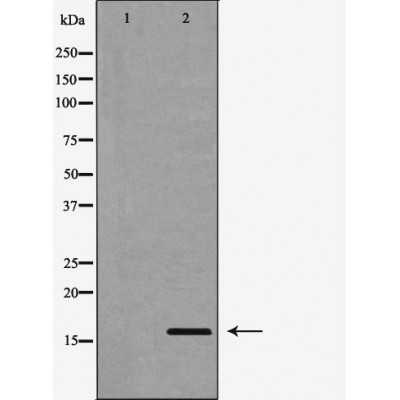Cystatin C Antibody - #DF6457
| Product: | Cystatin C Antibody |
| Catalog: | DF6457 |
| Description: | Rabbit polyclonal antibody to Cystatin C |
| Application: | WB IHC IF/ICC |
| Cited expt.: | WB |
| Reactivity: | Human, Mouse, Rat, Monkey |
| Mol.Wt.: | 16kDa; 16kD(Calculated). |
| Uniprot: | P01034 |
| RRID: | AB_2838419 |
Product Info
*The optimal dilutions should be determined by the end user. For optimal experimental results, antibody reuse is not recommended.
*Tips:
WB: For western blot detection of denatured protein samples. IHC: For immunohistochemical detection of paraffin sections (IHC-p) or frozen sections (IHC-f) of tissue samples. IF/ICC: For immunofluorescence detection of cell samples. ELISA(peptide): For ELISA detection of antigenic peptide.
Cite Format: Affinity Biosciences Cat# DF6457, RRID:AB_2838419.
Fold/Unfold
AD 8; AD8; Amyloid angiopathy and cerebral hemorrhage; ARMD11; bA218C14.4 (cystatin C); bA218C14.4; Cst 3; Cst3; CST3 protein; Cystatin 3; Cystatin-3; Cystatin-C; Cystatin3; CystatinC; CYTC_HUMAN; Epididymis secretory protein Li 2; Gamma trace; Gamma-trace; HCCAA; HEL S 2; MGC117328; Neuroendocrine basic polypeptide; Post gamma globulin; Post-gamma-globulin;
Immunogens
A synthesized peptide derived from human Cystatin C, corresponding to a region within the internal amino acids.
Expressed in submandibular and sublingual saliva but not in parotid saliva (at protein level). Expressed in various body fluids, such as the cerebrospinal fluid and plasma. Expressed in highest levels in the epididymis, vas deferens, brain, thymus, and ovary and the lowest in the submandibular gland.
- P01034 CYTC_HUMAN:
- Protein BLAST With
- NCBI/
- ExPASy/
- Uniprot
MAGPLRAPLLLLAILAVALAVSPAAGSSPGKPPRLVGGPMDASVEEEGVRRALDFAVGEYNKASNDMYHSRALQVVRARKQIVAGVNYFLDVELGRTTCTKTQPNLDNCPFHDQPHLKRKAFCSFQIYAVPWQGTMTLSKSTCQDA
Research Backgrounds
As an inhibitor of cysteine proteinases, this protein is thought to serve an important physiological role as a local regulator of this enzyme activity.
The Thr-25 variant is O-glycosylated with a core 1 or possibly core 8 glycan. The signal peptide of the O-glycosylated Thr-25 variant is cleaved between Ala-20 and Val-21.
Secreted.
Expressed in submandibular and sublingual saliva but not in parotid saliva (at protein level). Expressed in various body fluids, such as the cerebrospinal fluid and plasma. Expressed in highest levels in the epididymis, vas deferens, brain, thymus, and ovary and the lowest in the submandibular gland.
Belongs to the cystatin family.
Research Fields
· Organismal Systems > Digestive system > Salivary secretion.
References
Application: WB Species: Mouse Sample: GA tissues
Restrictive clause
Affinity Biosciences tests all products strictly. Citations are provided as a resource for additional applications that have not been validated by Affinity Biosciences. Please choose the appropriate format for each application and consult Materials and Methods sections for additional details about the use of any product in these publications.
For Research Use Only.
Not for use in diagnostic or therapeutic procedures. Not for resale. Not for distribution without written consent. Affinity Biosciences will not be held responsible for patent infringement or other violations that may occur with the use of our products. Affinity Biosciences, Affinity Biosciences Logo and all other trademarks are the property of Affinity Biosciences LTD.


